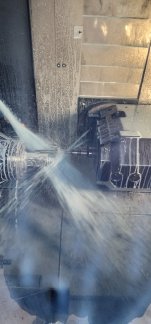I worked as an AE at an Okuma/Tsugami dist for 8 years. I saw a lot of shops struggle when getting into a B-axis style mill turn machine. Some were customers we sold Multus machines to, others bought our competitors machines (Nak, DMG, Mazak, etc.). The only way to justify the high price tag of these types of machines is to reduce operations and setup time, especially for job shop type work. There were a few common issues that seemed to be the most relevant to successfully implementing this type of machine.
1. Software. The customers that had better software had better results. The ones that didn't struggled to get good code and prove out programs in a timely manner. They took days to prove a program rather than hours. This was a decade ago so they may have improved, but Mastercam was the biggest culprit. Gibbs shops also seemed to struggle but I think that was more because of the local dealers greedy post development process. Customers with Esprit or other high end mill turn software had significantly reduced times getting new parts processed. The better the software's simulation, the better the results at the machine.
2. Lathe operators versus mill operator. Many times shops they would stick these machines in their lathe department and put 2 axis lathe operators on them. These are complex machines that need very capable operators/machinists to make them productive.
3. Refusing to learn/use all of the options available in the machine. The Okuma Multus comes with their CAS collision avoidance software. Most builders have something like this now. It takes a little up front work to model your tools and holders, but once it is done you can run through program in high speed machine lock mode to prove them out and check for collisions. This is way faster than a machinist sitting with their hand on both knobs and watching code go by while. At my current job we use the CAS in all of our Okuma millturns. Most of our parts are 5-20 minutes cycle times and we can prove out most new parts in under an hour including setting up CAS for new tools and jaws.


